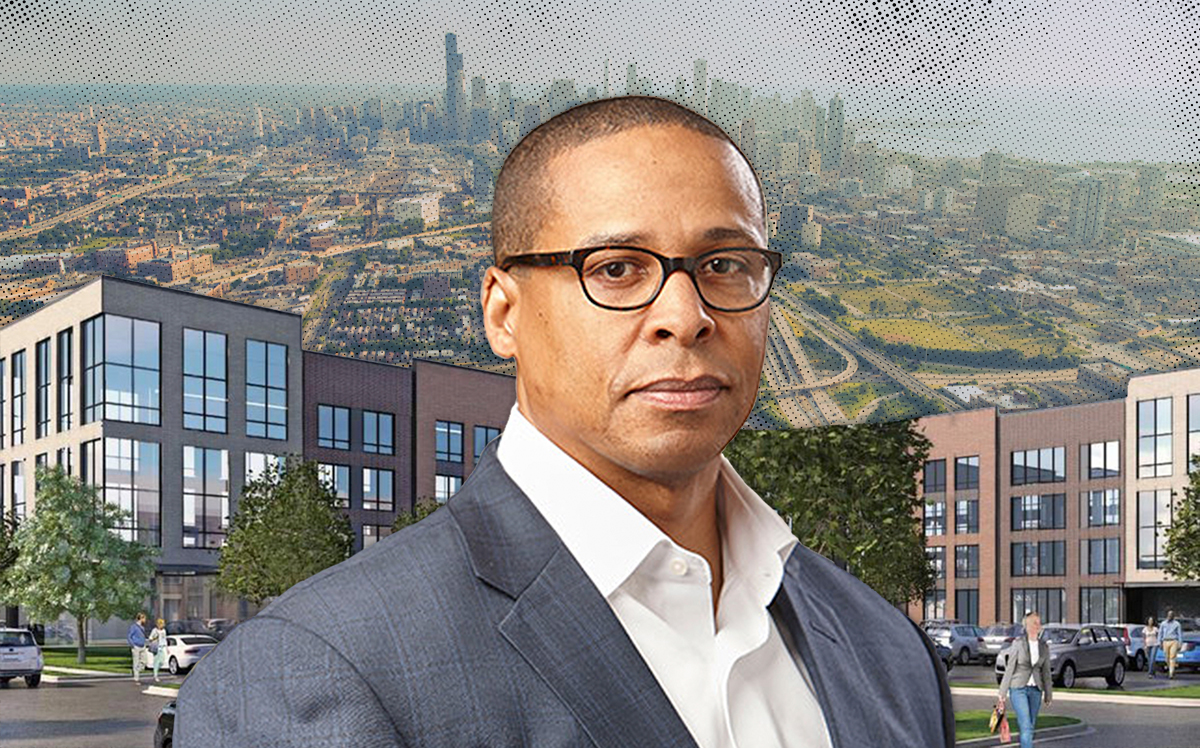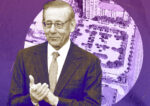Trending
Habitat Company’s Charlton Hamer on finding his purpose in affordable housing development, and making it all pencil out
The firm’s senior vice president of affordable development is a firm believer in the federal Opportunity Zones program and says mixed-use projects will sustain Chicago communities

Charlton Hamer is an Opportunity Zones believer.
As head of Habitat Company’s affordable housing division, Hamer said the federal tax incentive program has allowed the Chicago developer to launch its latest project: Ogden Commons.
The $200 million development in North Lawndale is a partnership with the Chicago Housing Authority, Sinai Health System and Cinespace Film Studios, and will include more than 300 residential units and a large commercial component. Hamer’s Affordable Group is also teaming up with P3 Markets on a 91-unit development in Bronzeville targeted to millennials, and which will include an affordable component.
Hamer has a broad real estate background, one that includes urban planning, brokering and consulting. As senior vice president of Habitat’s Affordable Group, he manages the firm’s portfolio of more than 10,000 affordable units in Chicago and St. Louis. The company’s portfolio also includes thousands of condominiums and luxury high-rise towers.
He is also a member of the city’s 20-person Inclusionary Housing Task Force, which Mayor Lori Lightfoot created and whose members she appointed. The group will review the city’s existing laws that require some developers to include a certain number of affordable units in their projects, and will identify broader steps needed to boost such housing. A group of aldermen — some are part of the task force — support boosting the requirement to 30 percent.
In a recent interview with The Real Deal, Hamer talked about ensuring affordable housing also works for developers, why mixed-use projects can sustain neighborhoods and how he found his calling after redeveloping a property once owned by P.T. Barnum.
This interview has been edited for length and clarity.
How did you end up in affordable housing development?
It’s the one where I felt that there was the biggest need — enhancing the lives of people who don’t have the income to afford market-rate housing, wherever that may be, and whatever that means in a particular municipality or region. It helped me with responsibility and kind of gave me a purpose. It really rang true for me almost 20 years ago when I developed townhomes that were originally constructed in the mid-1800s as part of P.T. Barnum’s original development in the city of Bridgeport, Connecticut. We did a gut rehab on the buildings and when we moved families into those units, there were tears streaming down their faces because they were able to afford something that was decent, safe and had great amenities as well. That was really what did it for me to stay in the realm of affordable housing.
Does Habitat mostly build mixed-income developments?
That’s what we’re doing a lot of now. I think that’s the trend. In the past, Chicago was segregated not only by race and ethnicity but also by income. If you look at public housing, which is for families who are at 30 percent below area median income, it was developed all at once and it was holistic in its development. There was nothing mixing up incomes, and there were very little commercial and retail options as well. Affordable housing has evolved and it’s not done in a vacuum of just developing affordable units. So you’re developing a community.
What’s Habitat working on right now?
Our most notable project right now is Ogden Commons [on the West Side]… The development will consist of a bit over 300 affordable units and market-rate units, various different building types, and about 140,000 square feet of commercial retail space located on Ogden Avenue. It’s multi-layered financing, a lot of capital was cobbled together to make this deal work.
Describe Ogden’s commercial component.
The first phase is approximately 52,000 square feet of commercial retail space, including [a total of 27,000 square feet] for Studio 18 — an affiliate of Cinespace Studios — and an incubator for production companies. We’ll have retail and restaurant tenants, including Wintrust Bank and Steak ‘n Shake, and then we’ve got almost 2,000 square feet that’s spec right now. But I think we’re getting close to signing a lease.
How has Habitat Co. positioned the project?
We’re developing a community there. It’s a tremendous economic boost for that area in North Lawndale, an area right now that is vastly underserved. But there’s promise there because you have over 11,000 people who are employed there on a daily basis. So it’s a very, very, very exciting project. And I think it bodes well for some of the mayor’s initiatives and what she’s been talking about as far as developing not only affordable housing, but also from an economic development standpoint in underserved communities.
Talk about Ogden’s “multi-layered” financing.
The project itself is in an Opportunity Zone. Like many other developers right now, we thought, well, this is a new program. There seems to be a significant amount of interest. People are aggregating funds and creating qualified Opportunity Zone funds. We were fortunate enough to team up with PNC Bank because it has a qualified Opportunity Zone fund, and they provided both equity and debt for the development. We did find another investor who wanted to place funds into this project and benefit from Opportunity Zone funds.
We were able to get some capital from the CHA — Chicago Housing Authority — affiliate as well. The City of Chicago has a neighborhood Opportunity Fund, which helps subsidize the buildout for retailers, primarily minority retailers, that are looking at expanding their business in areas that have seen a significant amount of divestment. The Steak ‘n Shake minority franchisee and the owner of a restaurant that’s expanding from Hyde Park were the recipients of those funds.
Opportunity Zone funds were a godsend for this project, to be able to provide equity in areas where generally there would be just way too much risk. And the program itself provides incentives to investors to defer their capital gains tax five, seven, and, of course 10 years over time, and get us this fairly good return on their investment as well and place their funds in places that have been divested in for years.
So, you’re a proponent of the Opportunity Zone program?
Absolutely. Please, I’m not a proponent of the president. There’s a difference.
How should Chicago approach the affordable housing shortage?
I think the mayor is doing a good job of looking at a number of different things. I do sit on the affordable housing task force and she’s brought in people who have a desire and a great interest in making sure that that program works properly.
What do you think of Chicago’s Affordable Requirements Ordinance?
It’s got to pencil out for the developer. Period. A developer who’s developing market-rate housing has to have the incentive or funding resources to be able to develop affordable housing, and then that developer also can’t be burdened by the affordable crisis that is throughout the city, meaning that housing development in itself — market-rate, condo, affordable — is an economic development endeavor. Any housing development, even if it’s market-rate housing, becomes affordable housing over time, so as new buildings are delivered, older buildings become more affordable. But as far as the ARO goes, there are a number of different things that you have to look at and it really has to pencil out and has to be really incentivized for the developer.
Any final thoughts?
If we don’t focus on the middle class, that working-class group — teachers, firemen, policemen, people in social service and the service industry — those are the jobs that are going to leave the city. So, a lot of times when we talk about affordability, it means 60 to 30 percent area median income, which is very low. But part of our issue is 60 to 120 percent [area median income]. It’s not as acute here as it is in New York and San Francisco, but it’s getting there. I think we need to realize as a city, that there are funds that we need to prioritize for producing affordable housing or obtainable housing for that group.




